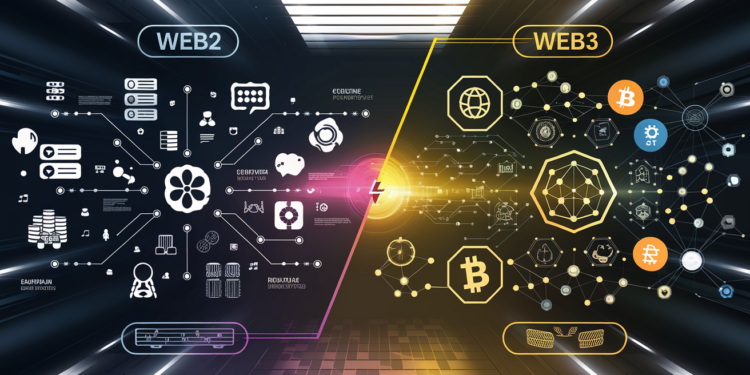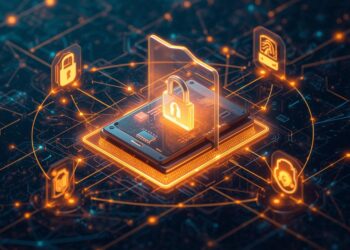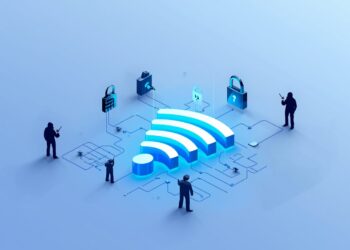The internet has gone through many changes since it first came online. Two major phases of this evolution are Web2 and Web3. These phases represent different ways of interacting with the internet. While Web2 is familiar to most users, Web3 introduces new concepts that shift power and control towards users. This article explores the differences between Web2 and Web3, highlighting why these distinctions are important.
Decentralization: The Core Difference Between Web3 and Web2
Web2 relies on centralized systems. Here, a few companies control vast amounts of data and services, which can lead to several problems:
- Single Points of Failure: Centralized services can crash or go offline.
- Limited Control: Users have little say over how their data is used.
In contrast, Web3 is built on decentralized architecture. It utilizes blockchain technology and distributed ledgers, which means:
- No Central Authority: Control is distributed across users.
- Increased Resilience: The system is less likely to fail since no single entity holds control.
Real-world examples of decentralized applications (dApps) include Uniswap and OpenSea. These platforms empower users by allowing them to trade and own digital assets without intermediaries.
Data Ownership and Privacy: A Tale of Two Internets
In Web2, data collection is the norm. Large companies often gather personal information, leading to:
- User Privacy Concerns: Users may feel their data is not safe.
- Frequent Data Breaches: Statistics reveal thousands of data breaches annually, with millions of records compromised.
Conversely, Web3 focuses on data ownership. Users gain control over their information, with a few key benefits:
- Enhanced Privacy: Users dictate who can access their data.
- Data Portability: Information can easily move across platforms.
The emphasis on user data ownership is a vital perspective for the future.
Security and Transparency: Comparing Models
Web2 faces significant security risks. Centralized systems often:
- Vulnerabilities to Hacking: Hackers target large platforms because the payoff can be huge.
- Data Breaches: Users’ personal information can be exposed.
Web3 counters these risks through cryptography and blockchain technology. This provides:
- Improved Security: Each transaction is verified and recorded, making it harder to tamper with information.
- Transparency: Users can see how their data is used and who has access to it.
Case studies highlight various successes in Web3 security, as well as some failures, proving the technology’s potential while acknowledging room for improvement.
The Role of Tokens and Cryptocurrency in Web3
Tokens are essential to Web3. They enable participation in decentralized ecosystems. Here’s how:
- Facilitation of Transactions: Users can trade and interact through tokens, enabling a smooth experience.
- Variety of Tokens: Different types include utility tokens, security tokens, and governance tokens, each serving unique purposes.
Cryptocurrency plays a crucial role in Web3’s adoption. It encourages users to engage with dApps by providing financial incentive and ease of use.
The Future of Web3: Challenges and Opportunities
Web3 has immense potential, but it also faces challenges. Key issues include:
- Scalability: Applications must handle large volumes of transactions.
- Interoperability: Different networks need to communicate effectively.
Despite these challenges, Web3 can revolutionize industries like finance, health, and supply chain, offering exciting opportunities for innovation.
Businesses keen to explore Web3 should consider:
- Educating Staff: Understanding the technology is critical.
- Pilot Projects: Small-scale trials can help assess viability.
Conclusion: Embracing the Decentralized Future
The journey from Web2 to Web3 is more than just a technological shift. It reflects a change in how we interact with the digital world. Key takeaways include:
- Understanding Decentralization: Recognize the shift from centralized control to user empowerment.
- Prioritize Data Privacy: Advocate for user data ownership.
- Stay Informed: The evolving landscape requires adaptation and ongoing learning.
As we move forward, the future of the internet promises to be more inclusive and user-centric. Engaging with Web3 concepts today can prepare individuals and businesses for tomorrow’s opportunities. Explore Web3 further to understand its potential fully.

























